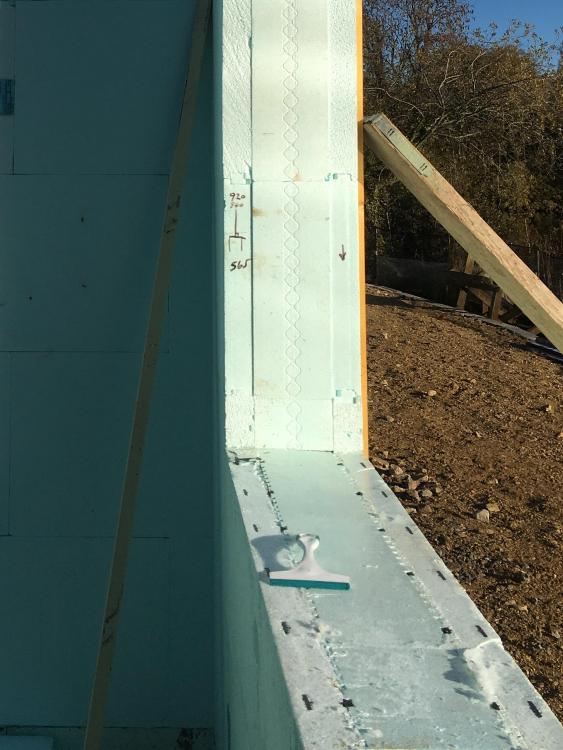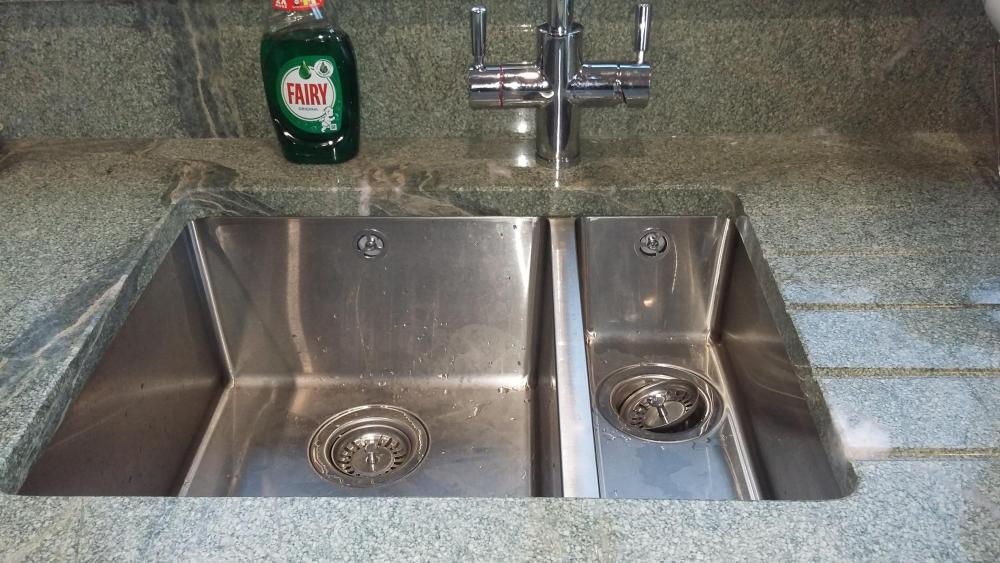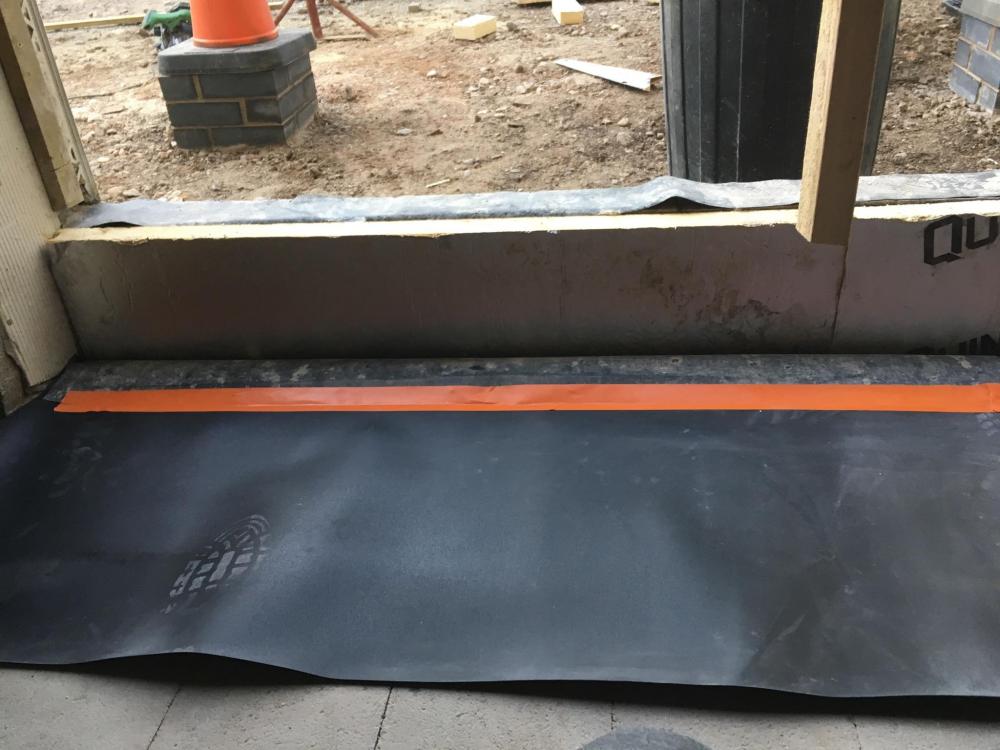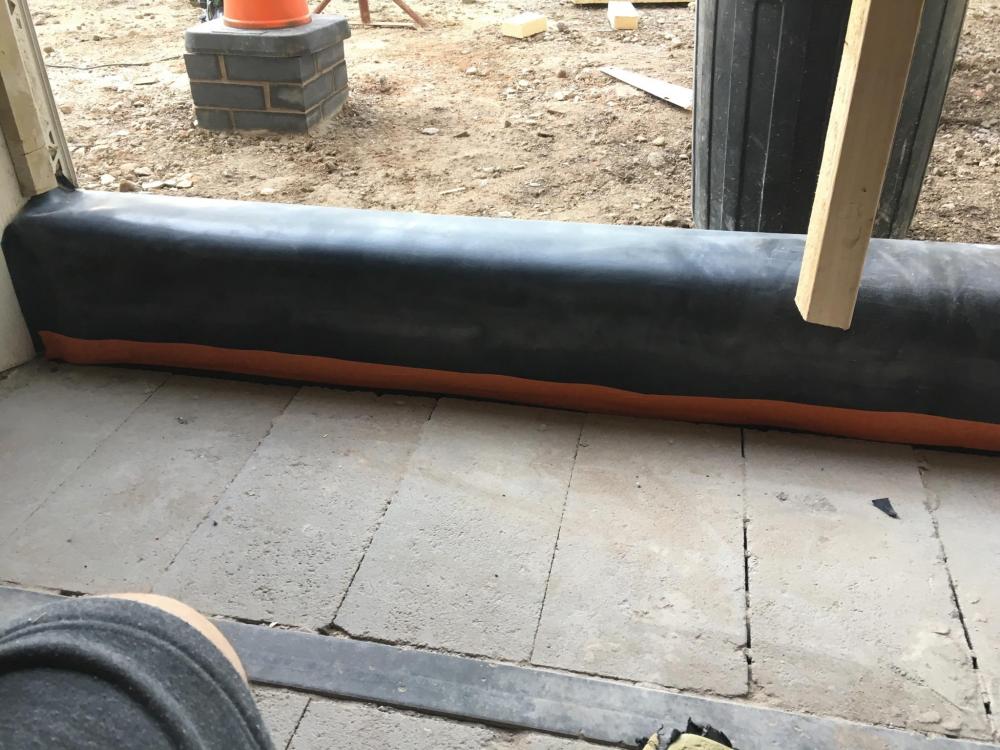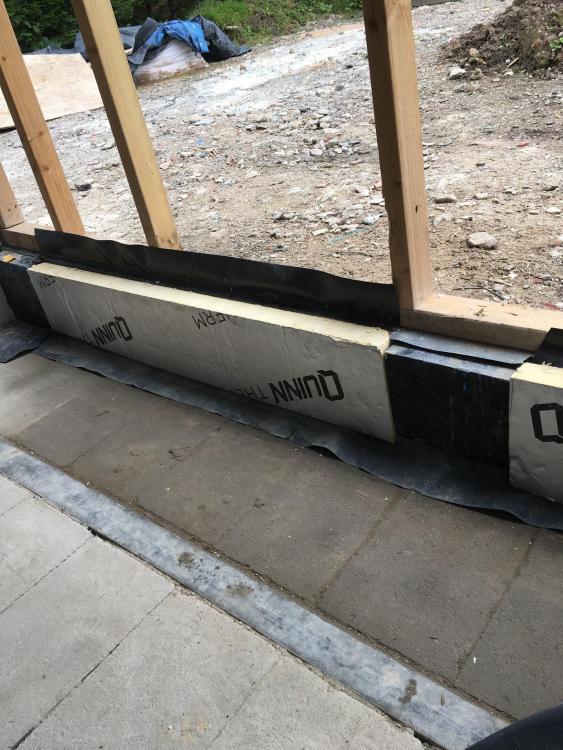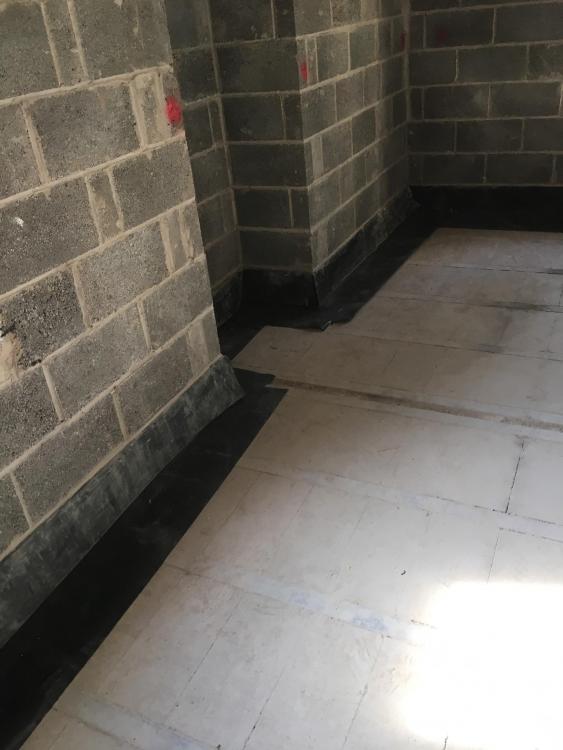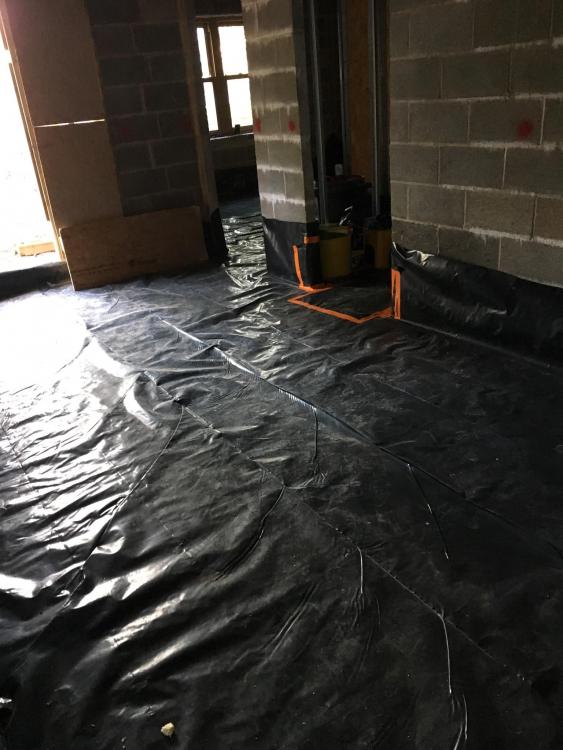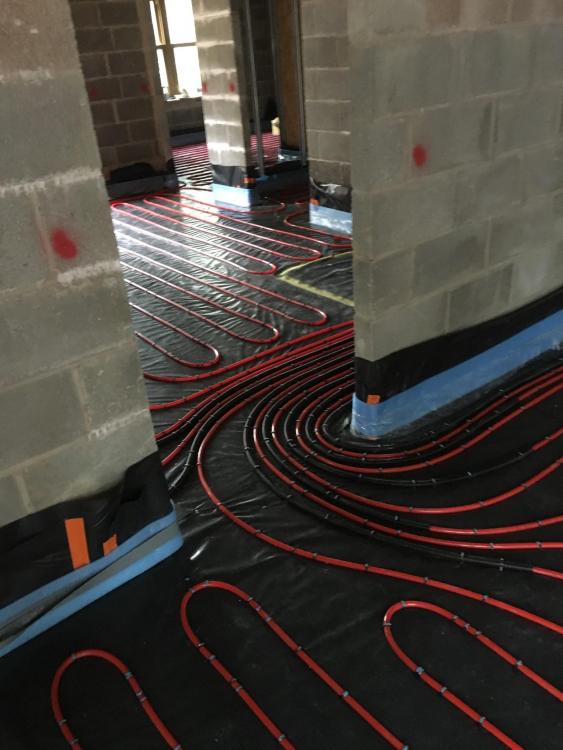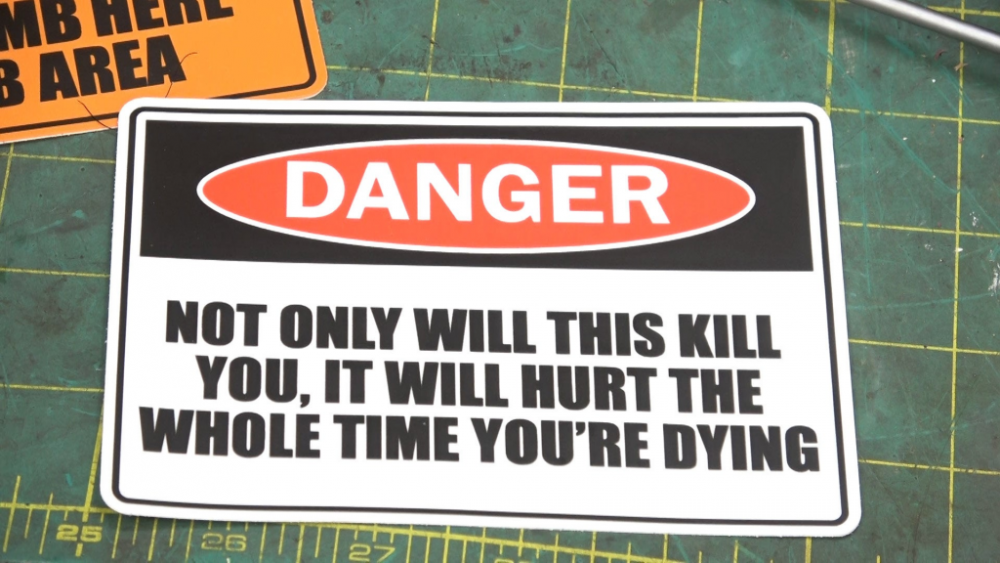Leaderboard
Popular Content
Showing content with the highest reputation on 01/03/20 in all areas
-
I will undertake a rare abuse of my mod status and delete any such thread on sight. There is literally (literally!) nothing wrong with 'MVHR' as a term. It's an abbreviation of a sequence of words that form a perfectly adequate and accurate description of the equipment's function.3 points
-
Evening all. So fitting windows in a icf wall. My cill area is made up using the cavity closer system from the icf manufacturer (nudura) so I end up with a concrete core and 50mm of eps on top which closes the cavity and forms a no cold bridge type of design, super dooper however im concerned over the weight of the windows sitting down onto this eps insulation, will they sink over time?? im thinking I need something to spread the load over the eps, something like a cement board, or even a sheet of upvc or something, I have considered removing the closer and replacing it with a higher density xps type insulation. Please see pic.1 point
-
As required by law, the big energy companies have introduced their export tariffs. https://www.recc.org.uk/news/smart-export-guarantee-tariffs-introduced1 point
-
Get digging! A real sense of achievement and cheaper that gym membership! ? I've only 150mm pir +25mm eps under mine. Tbh, at the time I'd just had enough digging. Knowing what I know now I'd have dug deeper and put more insulation in. Got there in the end though! The next 4 rooms and hall shouldn't be so bad as suspended floors of different depths. Maybe no digging at all in 2 and the hall, just remove the joists and dwarf walls and build back up!1 point
-
There is a company near me advertising this, without insulation under that slab you might as well cut your money up and throw it out of the window.1 point
-
An individual molecule may have several vibrational states which each require different wavelengths of light because the energy of the absorbed photon (and therefore the wavelength) must be the same as the change in energy needed to move between the vibrational states. e.g. a water molecule as three vibrational modes, 1. where the two O-H bonds change length in unison (symmetric stretch) 2.where they oscillate out of phase with each other (asymmetric stretch) 3. where the H-O-H bond angle oscillates. Different molecules absorb at different wavelengths simply because their vibrational states are different and require different energies. Absorption at UV wavelengths requires electronic transitions within an atom. Some molecules e.g. H2O simply do not have constituent atoms with the necessary transitions. Ice definitely absorbs IR at a slightly longer peak wavelength than liquid water. Since water cannot absorb UV it must reflect/transmit it1 point
-
I run a tiling business I tend to be around 25 to 40 for the heavy tiles I’ve to pay a ruler out of that and wait 60 days to be paid Most tilers will complete 15 20 m2 per day on large uncomplicated areas1 point
-
1 point
-
1 point
-
I paid a fixed price for the floor tiling I had done, a few years ago, which was based on £32/m2 and the length of time he thought it would take. It took longer than he estimated so he lost a bit.1 point
-
It depends. My tiler, for the tiles I was using, prefered an hourly rate as it was too hard to estimate the time it would take.1 point
-
Simply done by adding a key to all the symbols used in the corner of a drawing. But are you SURE putting it all on a drawing is really the best? I find walking around the site with the customer and a big black marker pen and deciding in reality with the customer where everything should go makes more sense than trying to imagine on a drawing. Often they can't visualise until they see it in reality, where they want to put the tv etc, and what rooms need 2 or 3 way light switching and from where.1 point
-
Pictures as requested. There aren't actually any handles at all, there is just a metal channel and you pull the back of the doors to open things. Easy to clean than a handle, you can just run a wet cloth along the top edge of the door when it is open. Someone mentioned no dust on another thread about MVHR. I cannot see any dust anywhere in the house and I don't think someone has dusted everywhere. I always thought that most dust was due to dead skin, but in fact I think it is mostly atmospheric dust and pollen coming in from outside. In my flat in London the window sills literally turn grey from the dust from the road outside, I hate to think what it does to my lungs.1 point
-
1 point
-
1 point
-
Make sure your electrician knows the same set of symbols.1 point
-
Ha, I knew certification isn't very popular on this forum! ? We're doing it to aid in decision making and for the quality assurance, not the certificate. It means we are sure that timber-frame and window installation detailing etc. is fully reviewed, that we're choosing the best glass specification (u/g value) and overhang sizes to best balance insulation/solar gains, and to ensure the investment in external blinds makes sense amoung other things. Yes it's a couple of thousand £, but so it's the structural garantee, building control, site insurance and everything else. And if it improves our confidence in what we're doing and potentially also our comfort living in the house for the next however many years then it's money well spent in our minds (we don't have time or knowledge to play around with PHPP ourselves). Maybe I look into the Hornam spec from a u-value and airtightness standpoint, and if it's good consider including everything in thermal envelope and keeping things simple...1 point
-
Interesting to see how this particular debate has unfolded. Are electric vehicles that green? From the perspective of zero emissions at point of use, yes. Assume that the power for those cars is derived from 100% renewable or emission free sources, yes. Assume that all of the vehicle and its constituent parts can be recycled and reused, yes. But there's a problem with the key component in an EV, i.e. the batteries and what they are made of: Lithium production. From everything I've read, it's a hugely damaging (to the environment) process, but because it's out of sight, no-one really cares. In 20 years, I suspect we'll be told, just as we have with Diesel, that we are killing the planet and things have to change. And then there's Cobalt. Kids in the DRC digging up with their bare hands, and little to no environmental protection? Takes the shine of EV's IMHO. Reference was made earlier to patents of key battery technology being sat on. If we truly are at a tipping point in terms of the future of the planet, maybe governments need to seriously look at this, and remove patent protection if the holders fail to licence out or develop the tech themselves. We are prepared to compulsory purchase land to build a road or railway against the wishes of the owner, so why not patents on tech that could improve (or save) our world?1 point
-
1 point
-
Putting a joint in the wall is probably nearly as bad as admitting you liked jimmy savil. Dont do it.1 point
-
The most important one is actually the cold feed especially if it’s copper as you will get condensation on it and that will drip and cause water marks. Hot runs being insulated means you don’t overheat areas where there is a lot of pipe work.1 point
-
I do this for a living Often we use 25 mil acoustic insulation There’s a misconception that you need to pack the wall up with insulation Standard party wall between two student blocks is two 50 mil studs 120 void One layer of acoustic insulation To stop any sound bouncing around Studs done in MF 600 centres Braced at 1200 one layer of 15 mil soundblock on each Ive two bathrooms back to back and you can’t hear someone shouting on the other side of the wall1 point
-
Are you using nudura, if so you need to more or less disregard everything you read on the subject and do your own details Most of the information you find on the net regarding icf is not appropriate. Its all American and has very little in comparison to here. Also so if you are using any of the eps type of blocks YOU WILL NOT get a dpm to lap into the blocks, bloody impossible won’t happen, not unless your names Paul Daniels have a look on @Stones blog he has some detailed pics of how his slab foundation and blocks marry up stones had to use a liquid dpm because of radon, I had to use a liquid because of methane. If you have neither I would just specify waterproof concrete for first truck load and then normal concrete after that.1 point
-
When you say "in the footings", is this to take the water main through the foundation from outside to inside the building under what will eventually become the internal floor? I ask because the accepted practice is to use ducting for the water pipe as it passes through the foundation wall. The Building Construction Handbook 11th Edition page 937 has a diagram showing what is required with a 75mm drain pipe acting as a conduit for the water pipe through the wall and up to the FFL. In their diagram the footing blockwork is as deep as the regulation 750mm depth for laying a water main hence the water pipe and duct pass through blocks rather concrete. I assume your foundation concrete is thicker and the footing block courses will start above the 750mm regulation depth for the water main? The same page then has a confusing extra note "pipes passing under the foundations should be encases in mass concrete". I think this covers a different situation where the foundations are shallow and the arrival point of the mains pipe is completely below the main poured concrete foundations. Your builder should adhere to further mains water service standards as the water main passes up through the floor structure to FFL particularly insulation. The book shows insulation for the final 600mm of conduit up to FFL and where the water main emerges at FFL within 750mm of an external wall I think it recommends the whole conduit is insulated. Here is what an Anglian Water inspector would be looking for: Pipe has ducting and insulation where it enters the building. Ends of the duct are sealed. Within the property oversite, where there is a suspended floor or the pipe rises to less than 750mm deep within 750mm of an external wall the conduit should be insulated. If the pipe runs through concrete it is housed in continuous ducting to facilitate later removal. See page 11 https://www.anglianwater.co.uk/_assets/media/LED645_AW_DS_Connecting_10_steps_20pp.pdf I am a beginner who is about to tackle this on a diy basis so it would be good if @PeterWcould review this.1 point
-
Concreting a drainage pipe is quite normal Exspecially if it cuts across a drive Running a mains water in a footing is ridiculous and concreting over it is pretty stupid Services should be in a designated trench and be wyap certified I think Russel sumed it up perfectly You can’t trust someone llike this1 point
-
I've left a 75mm perimeter gap between inside skin of ICF walls and first UFH pipes. I'm going to fix scaff boards down at one end for the props to sit on. Like Russ says many many different ways to do it. The added faff of messing about with scaff boards out weighs cost of UFH in separate screed in my case.1 point
-
I would like to add a point about icf and a slab that has underfloor heating pipes in it @willbish and @Big Neil i have just done a pour for my icf walls and found the propping system for the walls required over 120 holes to be drilled into my floor to hold the props up. Make sure you have thought of a way to hold these props up if you have pipes installed1 point
-
This is a safe and conventional solution, but with the usual hassles of laying the screed on a per room basis which induces level issues etc. Quite a few of us have gone for a single-slab approach which requires a more competent crew and tighter quality standards -- which is probably an ask too far for most builders. See @Stones and @JSHarris blogs for examples of this approach used successfully. In my case the upside was that the entire slab was flat to within a few mm over 11m, and was cheaper too. But either way you really need to have your floor plan fixed and accurate to ~1cm IMO, and that includes where your doorways and any fitted units and cupboards are going to go. Any variations as @Russell griffiths says will need to rely on gluing. @Redoctober, I am not sure why you took your pipe runs so close to the room boundaries . For example in your hall I would have stuck with 9 instead of 10 runs. Your wallside runs look about 50mm from the CLS. By the time that you've boarded up and fitted the skirting your it looks like your carpet fitter will be nailing his gripper rods in directly over the pipe runs. Maybe you should consider using adhesive grippers1 point
-
For those with an insulated raft foundation, what was your ground bearing capacity figure? And was your raft designed with extra thickening? My SE had made noises that my ground bearing figure of 50kN/M2 is a bit low but workable. His latest design of the raft has 25% of the area thickened to 400mm and in these areas insulation reduced from 300mm to 150mm. This feels like a big step down in thermal performance to me, but perhaps I shouldn't be so concerned. During the ground investigation I was told that I had ideal ground for a raft so not sure how a 50kN/M2 figure has been derived. I've asked the GI chap if he could revisit his Standard Penetration test results with hope to increasing the ground bearing figure; no response yet. I also feel the SE is being over cautious; he has the slab edge thickened where a single story porch will be. That seems really unnecessary.1 point
-
Not sure who is doing your slab or how you are going to buy your reo but I have just had 3 tonne of cut and bent steel all prefabricated from a company called total building supplies, I was shocked how cheap it was and had to question if they had missed something out as it was £2000 cheaper than a quote I had already had .1 point
-
Did two DG windows recently. Foamed the first and used Compriband on the second. Imo Compriband all day long. Better "seal", less mess, more flexible over time compared to cured foam.1 point
-
ASHP 100mm spacings is for standard build houses where you don’t have a buffer and you are expecting significant fabric losses. You basically pump straight from the ASHP at 40c into the slab and hope it doesn’t overheat .... 150mm is usual for a decent insulation spec - 200mm and you’re probably at low uValues for most elements and don’t need massive amounts of heat input.1 point
-
We also have triple glazed French windows, but they are slightly poorer thermally than the main glazing, as they have to have a 6mm toughened inner and outer pane, so they are 6 -16 - 4 - 16 - 6, rather than the 4 - 20 - 4 - 20 - 4 that we have for the windows. The U value is slightly poorer, but subjectively they feel as warm when standing next to them on a cold day as the other windows.1 point
-
It's a great shame that the major benefit of triple isn't emphasised in that article, and is just ignored. Triple glazing isn't primarily about the U value, in fact I think the U value is probably one of the least important factors in most of the UK. Double glazing can achieve good U values, but cannot get close to the comfort improvement that triple glazing gives, because it only allows a single pane of low emissivity coated glass to be used (because the coating is fragile and has to be on the inner face of the outer pane). Triple glazing allows two low emissivity coated panes to be used, the inner face of the outer pane and the inner face of the centre pane. That just about doubles the long wavelength IR reflected back into the room, and as far as comfort goes, our bodies are very good at detecting high radiated heat loss, so standing in front of glazing that reflects most of our radiated body heat back feels, subjectively, a great deal warmer. We still have our old house, with decent double glazing and a single low emissivity coated pane. Although the U value of that glazing isn't bad, it feels, subjectively, pretty cold when you stand or sit in front of a window, and it encourages you to pull the curtains early, even when the room temperature is OK. In the new house you cannot notice any difference between standing in front of a window on a very cold day and standing in front of a wall, as the windows reflect back the majority of your body heat, more than the walls do I think. I think more needs to be made of this point, as it often seems to be missed in our obsession with U values.1 point
-
Remember the manifold should be upstairs as the highest point so you can release trapped / accumulated air / gas at the bottle vents on the manifold rails.1 point
-
0 points
-
Ooh that's not bad. I was looking at building my own diy MVHR using a correx heat exchanger (partly because it seems like fun), but for a couple of hundred quid it seems like ebay might actually be cheaper than the raw materials themselves. It's a small-ish property needing a minimum of 30 l/s on boost mode. Also I was originally from Somerset myself, living in a little village just outside of Bridgwater. One of the things I had to get used to when moving away was everybody calling meals lunch and dinner instead of dinner and tea0 points
-
Feynman replied, “Hey buddy if I could explain what I won the Nobel prize for in 2 minutes, it wouldn’t be worth winning the Nobel lyrics for would it!” But was overhearing a conversation today about the the recent MET Office data release. The daughter, probably late 30s was chatting to her Mother about how it was the second hottest dacade on records, within minutes, the Mother was explaining that the world is always getting hotter, as the Bible said about the flood. Was a conversation I wanted to join in, but felt best not to.0 points
-
It's only quantum mechanics, of course there should be a simple explanation. ?0 points
-
The Honda E has the same layout as the i3, the pedals look just like those on an automatic car. Unlike a friends 1930's era Rover that I drove to a show for him years ago. That had the accelerator pedal in the middle and the brake pedal on the right. Took some getting used to, but luckily there were three of us driving his cars in convoy to a show, so we kept the speed down.0 points
-
0 points
-
0 points
-
I gave up in the end of going off-grid mainly because the Tesla Powerwall2 would have been ideal but failed to hit its delivery deadlines for the UK off-grid certification - £26k spent on a long bit of copper instead :-(0 points


.jpg.c21f3ac78c9b7efd90cbdcb312744dc5.thumb.jpg.7adcad4c0e384f5ecd7d56b0618df6e5.jpg)
